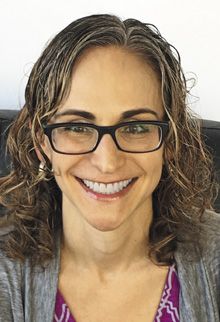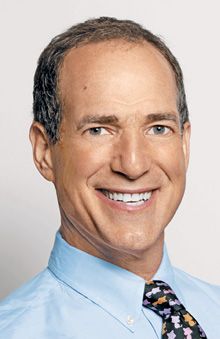A peek at vet med of tomorrow
In which we explore strange new zoonoses, seek out better diagnostics and new treatments, and engineer cats for world peace. (Really.)

(Getty Images)
Stop for a moment and imagine the world 25 years in the future, specifically the world of veterinary medicine. Babies being born at this minute might be the new veterinary graduates ready to venture into the world of pet healthcare. We asked some veterinary specialists to dream of the days ahead and picture what the world of veterinary medicine might look like in 2041 and beyond in their areas of expertise. Some fantastic stuff is due to happen, folks.

Dr. Sue EttingerThe topic of cancer
Sue Ettinger, DVM, DACVIM (oncology)
VCA Animal Specialty & Emergency Center, Wappingers Falls, New York
I dream of a cure for cancer, like every veterinarian, cancer specialist and pet owner. Or a one-time treatment, injectable or, even better, one oral pill that would be it for treatment! But I am not sure how reasonable that is for cancer. It may be more reasonable to ask for treatments that are less toxic for the staff to give and have even fewer side effects for the patients. I would love treatment to be less expensive so everyone who wanted to treat could.
I am excited we have more treatment options, like immunotherapy and metronomic chemotherapy for dogs with advanced disease. And I am hopeful we will have more personalized treatments that we tailor to the individual.
Finally, I hope we will can #kickcancersbutt

Dr. Garret PachtingerCritical care on another level
Garret Pachtinger, VMD, DACVECC
Co-founder, VETgirl; associate, Veterinary Specialty and Emergency Center, Levittown, Pennsylvania
The cliché, buzz word answer for where emergency and critical care medicine will be in 25 years would be “technology.” Saying there will be improved technology (i.e. more cage-side tests, cheaper magnetic resonance imaging machines, and an ultrasound machine on every street corner) is as obvious as predicting a new iPhone each year. This year the iPhone has no headphone jack. Mind. Blown.
What will be more interesting to watch is the evolving role of American College of Veterinary Emergency and Critical Care (ACVECC) diplomates within the hospital. Are they stationed in the ICU evaluating serial lactate measurements on every patient? Are they receiving on the front line of the ER? Are they becoming a true “hospitalist,” overseeing the ER, ICU and development of management and leadership skills?
On average, 50 new ACVECC diplomates pass their boards each year. They enter the real world looking to find a job to pay back student loans. Most of these newly minted specialists take positions in private practice. Are positions magically created for these new diplomates? Maybe. But eventually I predict the busy specialty hospital will employ fewer emergency room doctors, replaced by criticalists looking for positions. This is similar to what we have seen in human medicine where "board-certified emergency physician" has replaced "qualified emergency physician.” In turn, emergency room medicine will become more advanced, not because of new technology but because of trained specialists to recommend, use and interpret this new technology.

Dr. Elizabeth ColleranA retrospective on the fantastic fate of feline medicine
Elizabeth Colleran, DVM, DABVP (feline)
Owner, Chico Hospital for Cats, Chico, California; Portland Hospital for Cats, Portland, Oregon
As North American cities continued to grow, and urban migration increased among young people, the conflict between an ever increasing demand for companion cats and community/shelter efforts to sterilize cats escalated. Chemical sterilization techniques improved dramatically. Fewer and fewer colonies of cats could be found in and out of cities. The only feral cats still reproducing were the ones so wary of human contact that they were rarely in evidence.
People wanted tractable, sweet cats that liked humans and could adjust to life indoors-traits partly a function of socialization but also of genetic inheritance. Their polar opposites were the only cats whose numbers were growing. Early spay-neuter and chemical sterilization had conspired to create a shortage of cats people wanted just when more people wanted to adopt. The desire for companionship grew as families separated and more people lived alone. Cats were the companion of choice.
Recognizing this, feline veterinarians, geneticists, ethologists and other scientists formed a working group to address the challenges of demand.
There are breeds that are known for their friendly nature and strong bond with humans, but that gene pool was too small for widespread breeding without the risks of causing inherited genetic anomalies. Around the world, the effort was made to find Felis libyca and other species of compatible small cats who were socialized, preferred human connection and were able to reproduce. To maintain hybrid vigor, all of them had DNA sequencing performed and as much family history obtained as humanly possible. It took years to create the records necessary to build a population of cats that people wanted.
From this early effort, the protection of cats became a paramount worldwide undertaking. For the first time, scientists and veterinarians shared information across enemy lines. Every country in the world joined the effort to create a healthy gene pool of cats for whom homes were easily found.
And that's how cats were responsible for world peace.

Dr. Jan BellowsA pearly white future
Jan Bellows, DVM, DACVD, DABVP
Owner, All Pets Dental, Weston, Florida
Looking into the crystal ball, within 25 years in veterinary dentistry:
> All veterinary schools will embrace the importance of dentistry to the veterinarian, patient, client and practice. Dentistry will receive as much foundation and clinical time as surgery and medicine.
> All state practice acts will require those who advertise the practice of dentistry have intraoral radiology available. The standard of care will require full-mouth radiographs on all dental procedures. Dental extractions will be recognized as oral surgery only performed by a veterinarian.
> Easily instituted and efficacious plaque prevention processes will begin in puppyhood and kittenhood. And no longer will small pocket pets routinely loose teeth after a few years of life.
> Breeding of brachycephalic breeds (pugs, bulldogs, Boston terriers, Persian cats) will be discontinued because of multiple oral and general inherited diseases.
> The CORE (certified oral registration exam) program will be as accepted as Canine Eye Registration Foundation (CERF) and Orthopedic Foundation for Animals (OFA) exams to help decrease inherited oral surprises for folks purchasing purebred dogs and cats.
> The etiology of tooth resorption and stomatitis in cats and dogs will be discovered and preventive schemes will be developed.
> 3-D created segments of maxillae and mandibles will by fabricated to treat severe trauma.
> Transdermal pain prevention will be standard for every dog and cat receiving oral surgery.
New drugs, devices, diagnostics or concepts:
> Cone beam computed tomography oral imaging will be routinely used in specialty and dental only practices.
> Stem cell therapy will be embraced in general and specialty practices to regrow diseased gingiva, pulp neurovascular tissue and dental hard tissue.
Veterinary practice will be even more wonderful than it has been for the past 40 years, I've been involved:
> Vaccines will only be needed in those dogs and cats that show subnormal vaccine titers through in-house tests.
> Student debt will be a thing of the past with all graduate veterinary education provided at no expense to those accepted into veterinary school for the public protection.
> Thanks to the virtual elimination of allergic and parasitic skin disease, dentistry will account for at least one-third of the general veterinarian's time and practice income.
> Clients will appreciate the importance of insurance for their pets similar to their own coverage-the most needed dental and preventive care will be covered.
> Similar to human medicine many of the animal hospitals will be owned by the pet insurance companies, which will have gatekeeper and utilization input.

Dr. Jason StullThe prominence of public health
Jason Stull, VMD, MPVM, PhD, DACVPM
Andrew S. Bowman, MS, DVM, PhD, DACVPM
Department of Veterinary Preventive Medicine, The Ohio State University, College of Veterinary Medicine
Twenty-five years! Without a doubt, there are huge changes on the horizon. Here we highlight two key areas where you are likely to witness some big changes.
• Zoonoses. With 75% of emerging human diseases being zoonotic, interspecies disease transmission definitely made our list.

Dr. Andrew BowmanOur prediction: Many more zoonotic diseases (which we won't be able to pronounce) will become breakfast discussions. As animal-human interfaces continue to change, expect pathogens considered rare or sequestered to make their way into our backyards. Antimicrobial-resistant bacteria will be one of our largest clinical challenges-shoptalk around the water cooler will sound like alphabet soup: MRSA, MRSP, CRE, KPC...
Fortunately, advances in rapid molecular diagnostics will enable us to identify determinants of disease and allow us to answer questions currently stumping us: What role do animals play in transmitting disease to us? What practices can we employ to decrease disease risks? Unfortunately, getting people to actually wash their hands (well-known today as a key infection prevention strategy) will still be a challenge. The good news-the automated cleaning and pathogen-deterrent technology installed on common touch surfaces will alleviate this problem.
• Vaccines. This will be an area of huge progress. Currently, few of the zoonotic diseases in people or animals are preventable with vaccines.
Our prediction: Vaccine technology will reach new heights. Versatile vaccines against important pathogens, including parasites and multi-pathogen syndromes, will be readily available, offering cross protection against variations. A single flu shot will protect against all flu, regardless of subtype and year. Don't worry-needles will be a thing of the past.

Dr. David BruyetteA vital future, with one caveat
David S. Bruyette, DVM, DACVIM
Medical Director, West Los Angeles Animal Hospital
CEO, Veterinary Diagnostic Investigation and Consultation
Where will veterinary medicine be 25 years from now? Having been a veterinarian for 32 years and witnessing the changes that have occurred during that time, while the technologic future is truly unimaginable, I do think some aspects of our profession are predictable:
1) The value of pet ownership and the human-animal bond will only become strengthened. The inescapable momentum of being constantly "in touch" electronically will only deepen the desire to become physically and emotionally attached to a smaller number of closely held family members and pets.
2) The reliance on technology will never overcome the core requirements of being a successful veterinarian. To be able to listen carefully to a client's concerns and perform a thorough physical examination will be needed more than ever to target the technology in such a way as to arrive at a diagnosis and treatment plan in a timely and cost-effective manner.
3) We will see a continued evolution of the concept of “One Health” as practitioners, researchers, pharmaceutical companies and industry harness the intellectual and financial power of all these groups to expedite discoveries regarding pathogenesis of disease and drug discovery. Relying more on studying spontaneous diseases in animals and man as models for “One Health” will lead to the betterment of all species.
However, if we do not solve the economic crisis facing new and future graduates regrading student indebtedness vs salary, I see fewer and fewer of the best and brightest entering the field and fear a movement toward a trade mentality versus a professional mentality. Fortunately, this is something that we can choose to proactively address now so that in 25 years we can once again ask the question “Where will we be in 25 years”?

Dr. Melissa HallDestiny of dermatology
Melissa Hall, DVM, DACVD
Veterinary dermatologist, Animal Dermatology Clinic, Tustin, California
There are many exciting changes currently happening in dermatology-some great and some scary. On the positive side, numerous advances have been made and are currently being investigated in our available treatments, from flea prevention to symptomatic allergy control options. As veterinarians, our ability to make our patients more comfortable and healthy is improving every day, which is also saving our clients from many sleepless nights. And these new treatments are much more targeted, which means many fewer side effects, so much less frustration and higher success for these chronic cases.
On the flip side, antimicrobial resistance is on the rise. Methicillin resistant Staphylococcus pseudintermedius and multidrug resistant Pseudomonas aeruginosa are just two bugs that are going to continue to plague our cases. It is going to become trickier and trickier to treat both skin and ear infections. We are losing the fight when we just rely on systemic antibiotics. The good news is we understand more and more about the epidermis and the importance of topical therapy! I believe that many of these cases are going to be treated with shampoos, leave-on rinses and sprays, instead of the three-week course of oral antibiotics.
I wish I could say there will be no allergies or autoimmune diseases in our veterinarian patients in 25 years, but that is pretty unlikely. I do think we will have better treatment options, healthier pets and happier clients in the future.
And where will YOU be in 25 years?
In 25 years I will be 62. By then I hope to be retired and scheduling trips for tee-ball games and dance recitals of my grandchildren, not scheduling ER shifts. I have no current plans to slow down. I love what I do. But in the end family is what is important.
-Garret Pachtinger, VMD, DACVECC
If I have my way, I will be studying Italian and Italian cuisine (in between bicycle trips) somewhere in the hills outside of Milan.
-Elizabeth Colleran, DVM, DABVP (feline)
I'll hopefully be working part time, speaking consulting, traveling, and relaxing enjoying family and friends. I hope to have been on an African safari by then!
-Sue Ettinger, DVM, DACVIM (oncology)
Hopefully thanks to a vegan lifestyle and daily exercise, in 25 years I am above ground, completed my 100th marathon (77 to date so far), enjoying the company of my wife, three children and five grandchildren, loving my fifth German shorthaired pointer and still actively involved in veterinary dentistry.
-Jan Bellows, DVM, DACVD, DABVP
It is hard to imagine doing anything different from what we love (and are currently doing)-working to answer the public health and veterinary questions of today and developing our next generation of researchers and clinicians to help answer the questions of tomorrow. And perhaps, most importantly, we'll be close to retirement!
-Jason Stull, VMD, MPVM, PhD, DACVPM and Andrew S. Bowman, MS, DVM, PhD, DACVPM
I love my job and my patients, so I will still be here in dermatology, scratching the itch! I hope to continue to strive to improve the human-pet bond by making pets less stinky and less pruritic, case by case.
-Melissa Hall, DVM, DACVD